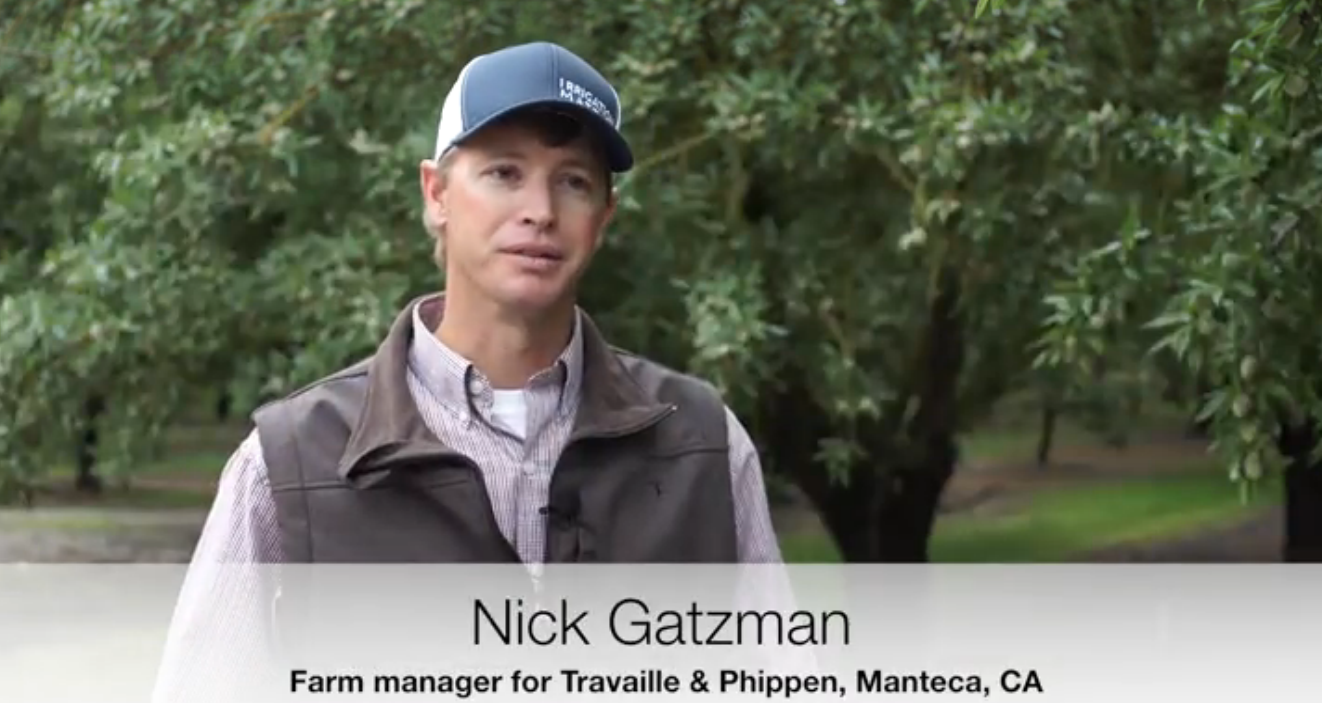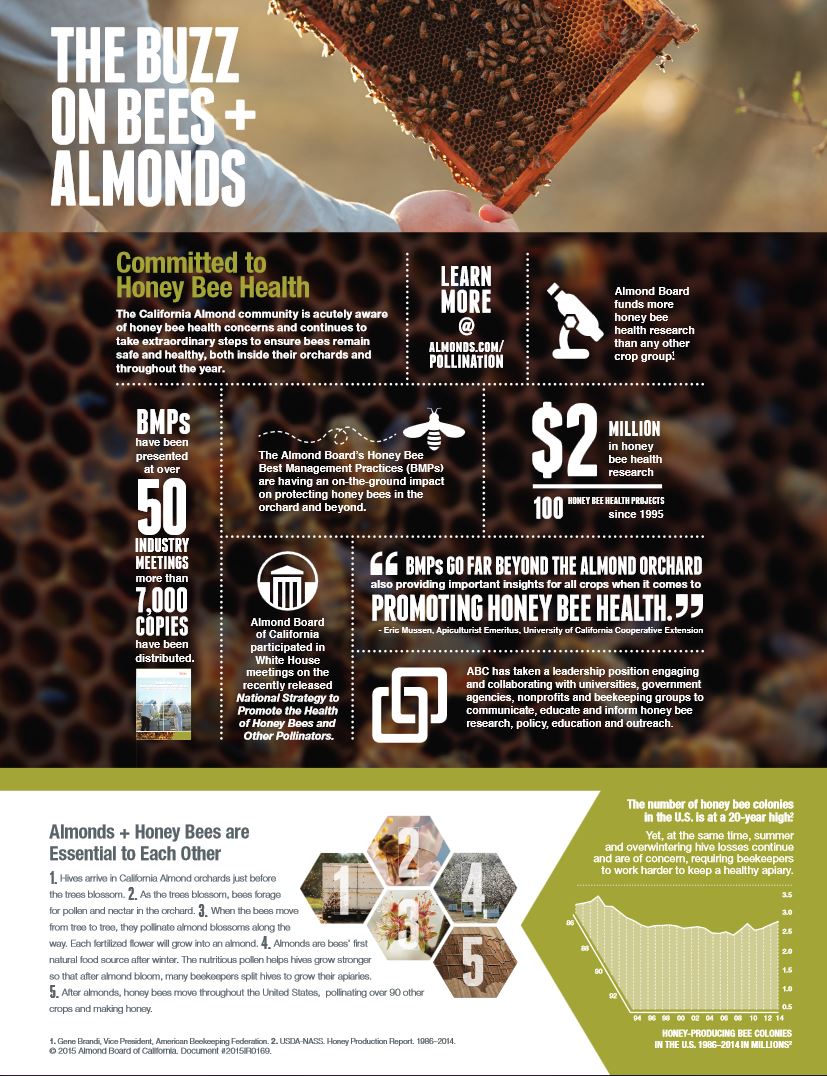National Pollinator Week, June 20-26, reminds us of the essential role pollinators play in global food security and, specific to almonds, the vital partnership between growing almonds and honey bees. Almond growers know, understand and value this relationship which plays out each year in pollinating California’s almond crop. Their long-term health and well-being is one of the California almond community’s top priorities.
“Bees are imperative to our business and to our industry,” says Manteca almond grower Nick Gatzman, the fourth generation to work his family’s 1,500 acres of almonds. “Without the bees, we wouldn’t have an almond industry.”
 Growers like Gatzman and those who farm the 6,800 almond orchards in California have made a serious commitment to protect honey bees both while they are in the orchard and throughout the year. Honey bees visit blooming almond orchards each spring to pollinate the crop, all the while getting stronger by feasting on nutritious almond pollen. After almonds, honey bees move onto pollinate a wide variety of other crops around the United States.
Growers like Gatzman and those who farm the 6,800 almond orchards in California have made a serious commitment to protect honey bees both while they are in the orchard and throughout the year. Honey bees visit blooming almond orchards each spring to pollinate the crop, all the while getting stronger by feasting on nutritious almond pollen. After almonds, honey bees move onto pollinate a wide variety of other crops around the United States.
Almond Board of California (ABC) takes extraordinary steps to be good partners to beekeepers and their bees by promoting honey bee health. Since 1995, over $2 million in industry-funded research has been invested by ABC in honey bee health to improve bee nutrition, effectively manage bee pest and diseases, improve breeding stock, and assess the impact of pesticides used in almonds. This investment, more than any other crop of commodity group, has funded more than 100 projects and leveraged additional research dollars from other groups, government agencies, and universities.1
Beyond almond growers and research investments, ABC has taken a leadership position by engaging and collaborating with universities, government agencies, nonprofits, and beekeeping groups to communicate, educate, and inform honey bee research, policy, education and outreach. Click here to learn more about our partners in this area including the Honey Bee Health Coalition, and Pollinator Partnership, and Project Apis m. For instance, Project Apis m. provides seed to almond growers who plant bee pastures filled with blooming plants adjacent to almond acreage as additional food sources for honey bees before and after almond bloom.
 In addition to supporting research, Gatzman and other growers also pay close attention to practices outlined in the Honey Bee Best Management Practices (BMPs) for California Almonds. Based on research and developed by the Almond Board, these BMPs provide simple, practical steps that almond growers can take together with beekeepers and other pollination stakeholders to protect and promote bee health on their land and in the surrounding community, particularly during bloom.
In addition to supporting research, Gatzman and other growers also pay close attention to practices outlined in the Honey Bee Best Management Practices (BMPs) for California Almonds. Based on research and developed by the Almond Board, these BMPs provide simple, practical steps that almond growers can take together with beekeepers and other pollination stakeholders to protect and promote bee health on their land and in the surrounding community, particularly during bloom.
“The most important thing for bee health is communicating clearly with our beekeepers about what their needs are and what our needs are,” said Gatzman. “We make sure we are all on the same page about what we’re doing to make sure our bees are healthy to do the job they need to do.”
The number of honey bee colonies in the U.S. is at a twenty year high and hive levels have remained relatively stable over the last two decades, but summer and overwintering hive losses due to a complex variety of factors remain a concern.2
As we mark this year’s National Pollinator Week, we take pride in the hands-on work growers like Gatzman do every day, the industry-funded research that continues to support improvements in honey bee health, and the vital partnerships that ABC engages in to support these essential pollinators.
1Gene Brandi, Vice President, American Beekeeper Federation.
2USDA-NASS. Honey Production Report. 1986-2014.